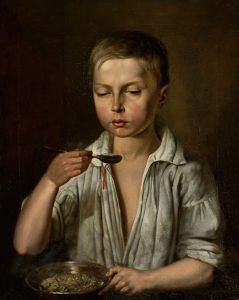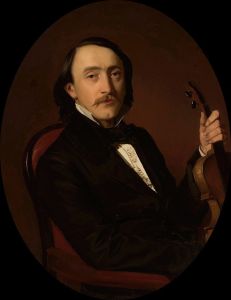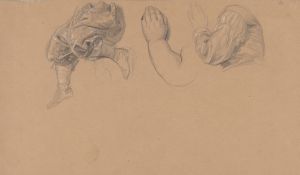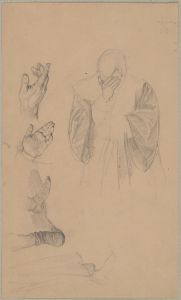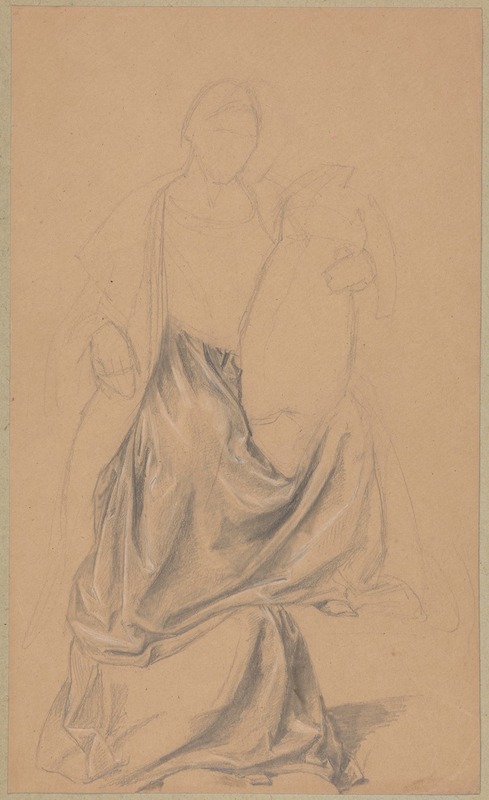
Studium do postaci Katarzyny Jagiellonki do obrazu ‘Katarzyna Jagiellonka w więzieniu w Gripsholmie’
A hand-painted replica of Józef Simmler’s masterpiece Studium do postaci Katarzyny Jagiellonki do obrazu ‘Katarzyna Jagiellonka w więzieniu w Gripsholmie’, meticulously crafted by professional artists to capture the true essence of the original. Each piece is created with museum-quality canvas and rare mineral pigments, carefully painted by experienced artists with delicate brushstrokes and rich, layered colors to perfectly recreate the texture of the original artwork. Unlike machine-printed reproductions, this hand-painted version brings the painting to life, infused with the artist’s emotions and skill in every stroke. Whether for personal collection or home decoration, it instantly elevates the artistic atmosphere of any space.
Józef Simmler, a prominent Polish painter of the 19th century, is renowned for his historical and portrait paintings. One of his notable works is the painting "Katarzyna Jagiellonka w więzieniu w Gripsholmie" (Catherine Jagiellon in Prison at Gripsholm), which depicts a poignant moment in the life of Catherine Jagiellon, a Polish princess and later Queen of Sweden.
Catherine Jagiellon was born on November 1, 1526, into the illustrious Jagiellonian dynasty, which ruled over Poland and Lithuania. She was the daughter of King Sigismund I the Old of Poland and Bona Sforza, an Italian princess. Her marriage to John III of Sweden, then Duke of Finland, in 1562, was a significant political alliance. However, this union led to a turbulent period in her life due to the complex political landscape of Northern Europe at the time.
The painting by Simmler captures Catherine during her imprisonment at Gripsholm Castle, which lasted from 1563 to 1567. This period of captivity was a result of the political conflict between her husband, John, and his half-brother, Eric XIV of Sweden. Eric, who was the reigning king, saw John and Catherine as potential threats to his rule, leading to their arrest and imprisonment.
Gripsholm Castle, located in Sweden, served as the backdrop for this challenging chapter in Catherine's life. Despite the adversity, Catherine's resilience and dignity during her imprisonment are well-documented. She maintained her composure and continued to fulfill her duties as a wife and mother, even giving birth to her first child, Isabella, during this time.
Simmler's painting is a testament to Catherine's strength and fortitude. It portrays her in a moment of introspection, capturing the emotional depth of her experience. The artist's attention to detail and use of light and shadow emphasize the somber yet dignified atmosphere of the scene. The painting not only reflects Catherine's personal struggle but also highlights the broader historical context of political intrigue and familial loyalty.
After their release in 1567, Catherine and John returned to Finland. In 1568, John successfully deposed Eric XIV and ascended to the Swedish throne as John III, making Catherine the Queen of Sweden. Her reign as queen consort was marked by her efforts to promote Polish culture and influence in Sweden, as well as her commitment to her family and her adopted country.
Józef Simmler's portrayal of Catherine Jagiellon in "Katarzyna Jagiellonka w więzieniu w Gripsholmie" remains a significant work in Polish art history. It not only commemorates a key historical figure but also serves as a reminder of the enduring human spirit in the face of adversity. Through his masterful depiction, Simmler has ensured that Catherine's legacy continues to inspire and resonate with audiences today.





